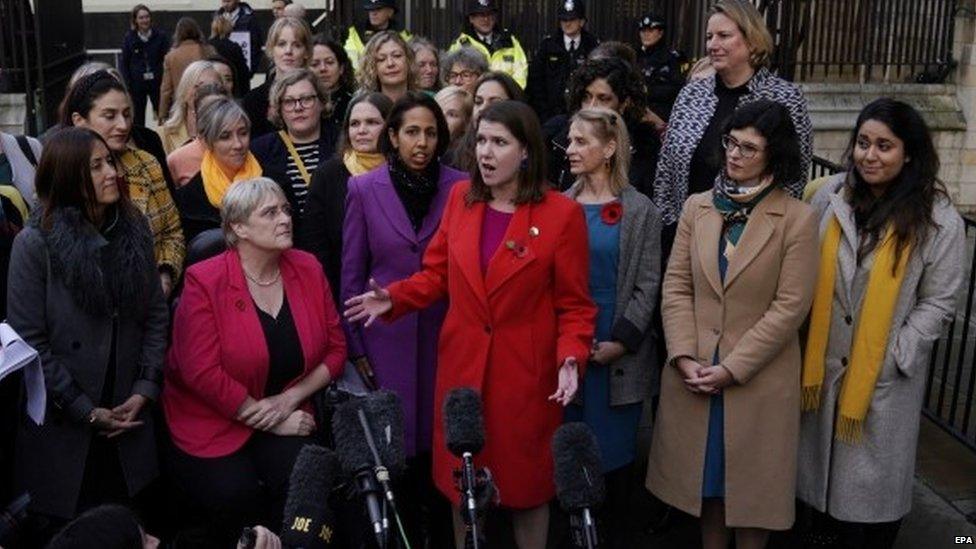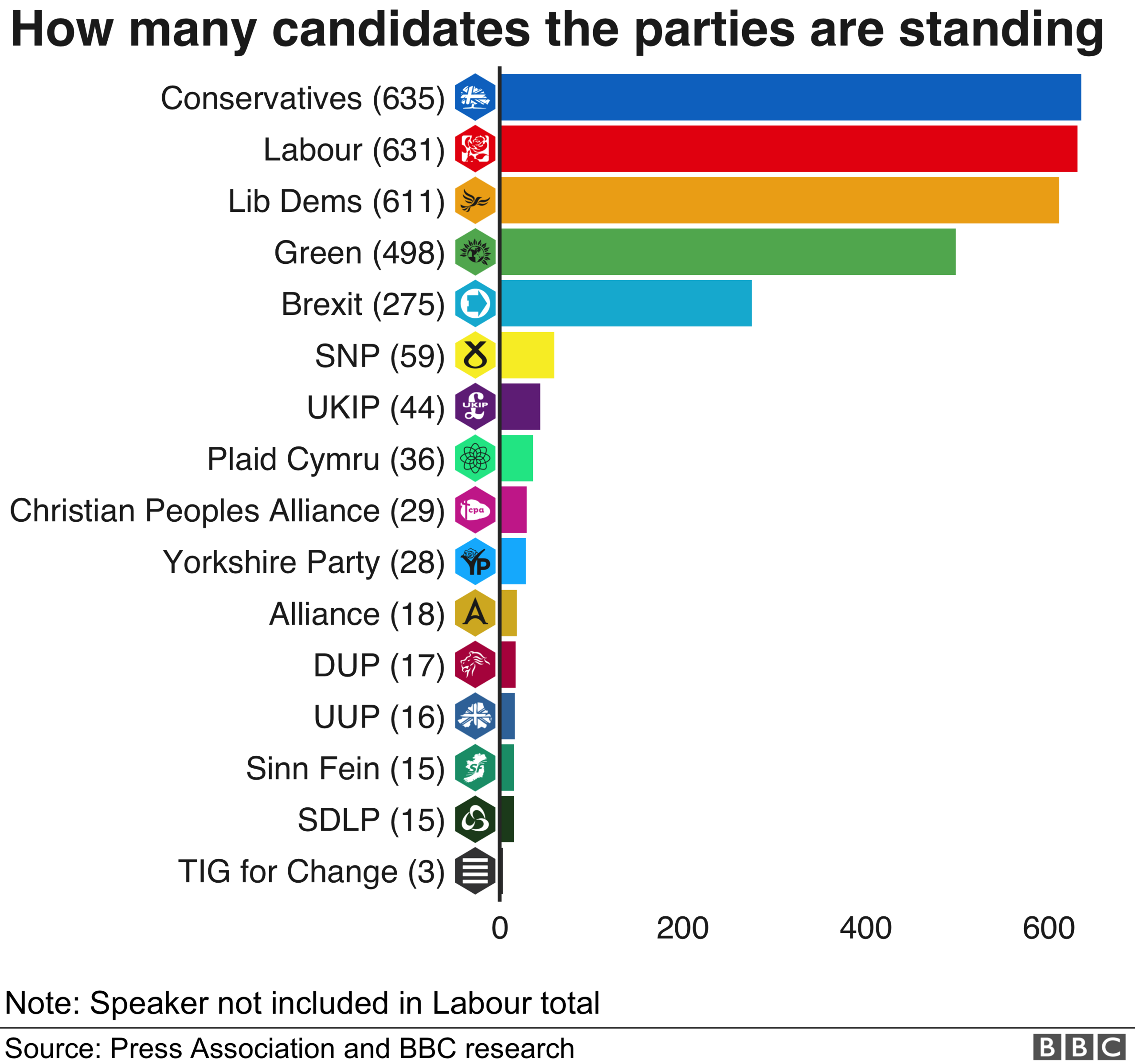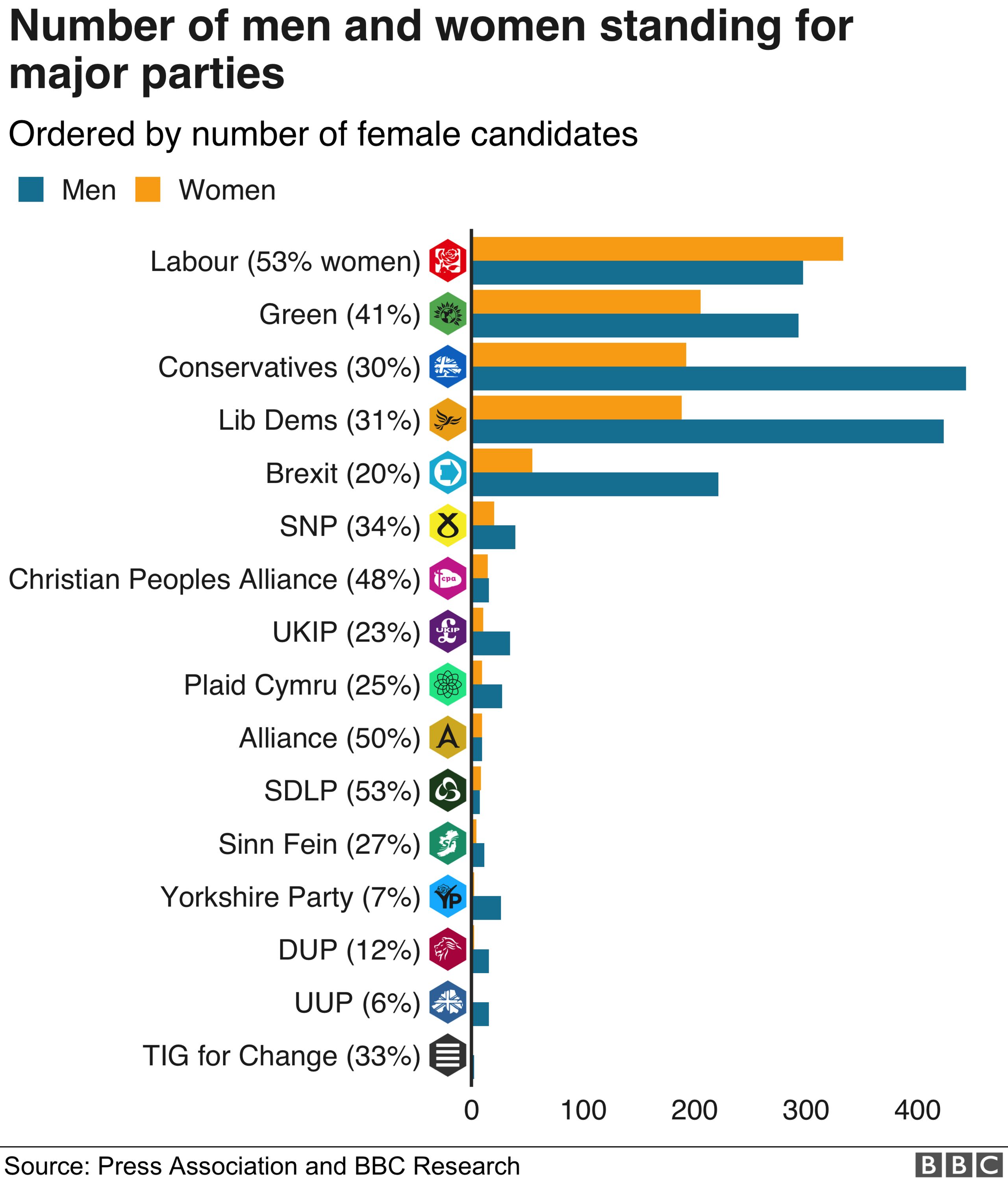General election 2019: Record number of women set to stand
- Published

The Lib Dems are set to field 188 female candidates
Record numbers of women look set to stand for Parliament next month, making up about a third of the candidates.
BBC analysis of Press Association figures found 1,124 of 3,322 registered candidates were women.
This figure is slightly higher than the 1,120 reported based on PA figures on Friday.
The Conservatives and Labour are set to field candidates in every constituency in Britain, except Speaker Sir Lindsay Hoyle's seat in Chorley in Lancashire.
The Brexit Party has put forward 275 candidates, having stood aside in the 317 seats won by the Tories in 2017 in an effort to avoid splitting the pro-Brexit vote.
The party has also opted not to contest handfuls of other seats being defended by other parties, particularly in Scotland.

LIVE : Latest election updates
CONFUSED?: Our simple election guide, external
POLICY GUIDE: Who should I vote for?, external
REGISTER: What you need to do to vote

The party, which topped the polls in May's European elections, is only standing in 15 of the 46 non-Tory constituencies in Scotland.
They are not contesting Lib Dem leader Jo Swinson's East Dunbartonshire seat.

The BBC's analysis of candidate lists in each of the UK's 650 constituencies shows that there will be a healthy increase in the number of women standing.
This year there are 1,124 female candidates, up from 2015's record of 1,033. In 2017, just 973 female candidates took part in that year's snap election, according to research by the House of Commons library.
More than half of Labour's candidates are women - 335 of 631, while 192 - or 30% - of the Conservatives' 635 candidates are female.
The Greens and Lib Dems are fielding 205 and 188 female candidates respectively.


There have been concerns that levels of abuse on social media might deter women from standing, with a number of high-profile former female ministers citing this as their main reason for quitting frontline politics.
The Lib Dems and Plaid Cymru are fielding fewer candidates than in 2017, the parties having agreed to stand down in some seats in order to maximise the pro-Remain vote,
However, UKIP is set to see the biggest drop in representation. It is standing 44 candidates, down from 467 two years ago.
Total candidates by party (women in brackets)
Conservative and Unionist Party - 635 (192)
Labour - 631 (335). Speaker not included in Labour total
Liberal Democrats - 611 (188)
Green Party - 498 (205)
Brexit Party - 275 (54)
Independent - 205 (32)
SNP - 59 (20)
UKIP - 44 (10)
Plaid Cymru - 36 (9)
Christian Peoples Alliance - 29 (14)
Yorkshire Party - 28 (2)
Alliance - 18 (9)
DUP - 17 (2)
UUP - 16 (1)
Sinn Fein - 15 (4)
SDLP - 15 (8)
The Independent Group for Change - 3 (1)
Note: This page was updated on Sunday 17 November after some provisional PA figures were updated following BBC research. The parties in the graphics are selected because they either had representation in the last two Westminster Parliaments, are standing in most seats in one of the four nations of the UK, or are standing more than 25 candidates overall. An earlier version of the graphic had this limit set at 30.